Mount Emei is located in Emeishan City, Leshan City, Sichuan Province. It is one of China's "Four Great Buddhist Mountains" and a national 5A-level scenic area. Covering a total area of approximately 154 square kilometers, its highest peak, Wanfo Top, stands at an altitude of 3,099 meters. The mountain is renowned for its natural landscapes characterized by "grandeur, elegance, uniqueness, steepness, and serenity," as well as its profound Buddhist culture. With a vegetation coverage rate of over 90%, it is home to more than 2,300 plant species and over 200 wild animal species, and is a dual World Heritage site (both cultural and natural). There are currently 28 temples within the scenic area, among which Wannian Temple and Baoguo Temple are key cultural relic protection units, and structures like the Copper Hall at the Golden Summit are regarded as treasures of Buddhist art.
History and Culture
Buddhist culture on Mount Emei originated in the Eastern Han Dynasty, flourished in the Tang and Song dynasties, and reached its peak in the Ming and Qing dynasties, with a history of nearly 2,000 years. In the 1st century AD, Buddhism was introduced to Sichuan via the Silk Road, and Mount Emei gradually became the Bodhimanda (spiritual cultivation site) of Bodhisattva Samantabhadra. It is collectively known as one of the "Four Great Buddhist Mountains" along with Wutai Mountain in Shanxi (for Bodhisattva Manjushri), Putuo Mountain in Zhejiang (for Bodhisattva Avalokitesvara), and Jiuhua Mountain in Anhui (for Bodhisattva Ksitigarbha). During the Tang and Song dynasties, the number of temples on Mount Emei reached more than 100, and it reached its heyday in the Ming Dynasty. The bronze statue of Samantabhadra from the Song Dynasty, preserved in Wannian Temple, weighs 62 tons and is a national key protected cultural relic.
Beyond Buddhist culture, Mount Emei is also one of the birthplaces of Chinese martial arts. Emei-style martial arts, together with Shaolin and Wudang, are known as the three major martial arts schools in China. Formed in the Tang and Song dynasties and thriving in the Ming and Qing dynasties, it is famous for its "combination of hardness and softness, and flexibility in techniques." The martial arts hall within the scenic area still preserves and showcases traditional martial arts performances to this day.
Major Scenic Spots
Golden Summit (Jinding)
The Golden Summit is an iconic scenic spot of Mount Emei, located at an altitude of 3,079 meters. It gets its name from the fact that most buildings on the mountaintop are covered with copper tiles. Here stands the world's largest golden Buddha—the 48-meter-tall Golden Statue of Samantabhadra with Ten Directions, as well as three halls made of gold, silver, and copper respectively. The "Four Wonders of the Golden Summit"—sunrise, sea of clouds, Buddha's light, and divine lamps—are renowned both at home and abroad. Among them, Buddha's light appears approximately 80 times a year, mostly between 2 pm and 5 pm.
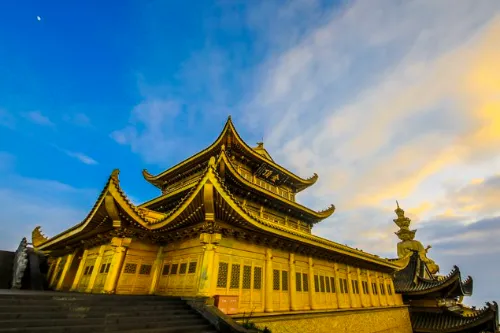
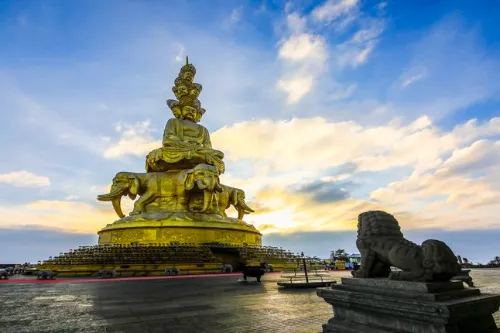
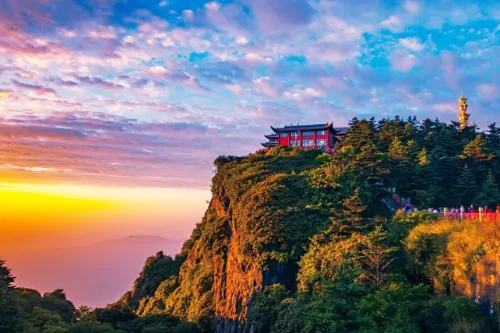
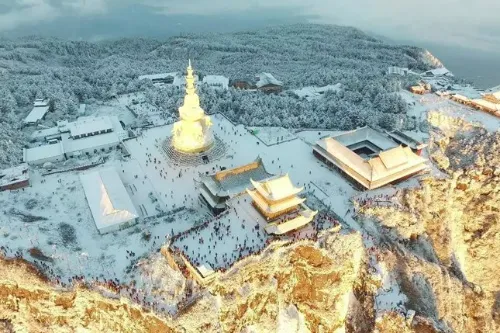
Wannian Temple
Wannian Temple is one of the oldest temples on Mount Emei. Founded in the Eastern Jin Dynasty, it was originally named Puxian Temple. The bronze statue of Samantabhadra from the Song Dynasty enshrined in the temple is 7.3 meters tall and weighs 62 tons, making it a national first-class cultural relic. The area where the temple is located has an extremely high negative ion concentration of 80,000 per cubic centimeter, serving as a natural oxygen bar. Surrounding attractions include the White Water Pool and the Beamless Brick Hall.
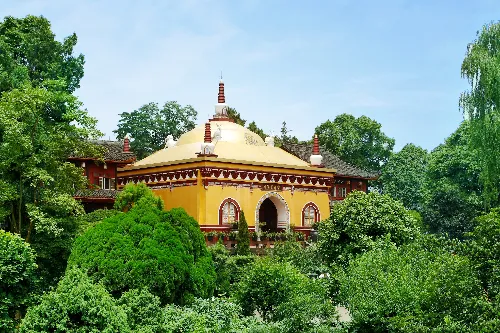
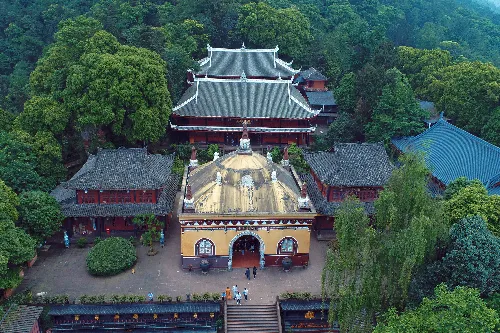
Jieyin Hall
Located at an altitude of 2,540 meters, Jieyin Hall is laid out in a quadrangle courtyard style, facing west with its back to the east. Composed of three layers of halls, it includes the Front Hall (Maitreya Hall), the Middle Hall (Mahavira Hall), and the Rear Hall (Amitabha Hall).
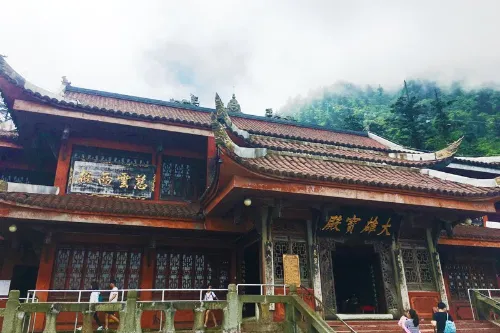

Wanfo Top
Wanfo Top is the highest-altitude scenic and natural ecological reserve among China's Four Great Buddhist Mountains, and also the highest-altitude World Heritage site (both natural and cultural) in China. Traveling westward from the Golden Summit, one reaches Qianfo Top. There was once a temple on Qianfo Top called Qianfo Nunnery, which no longer exists today. Beyond Qianfo Top lies Wanfo Top.
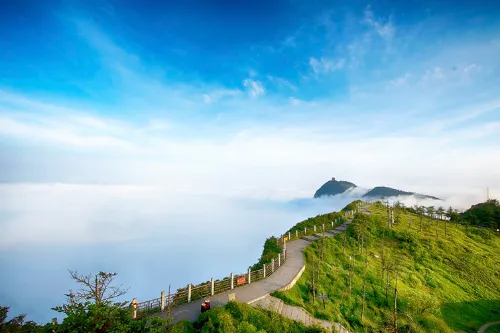
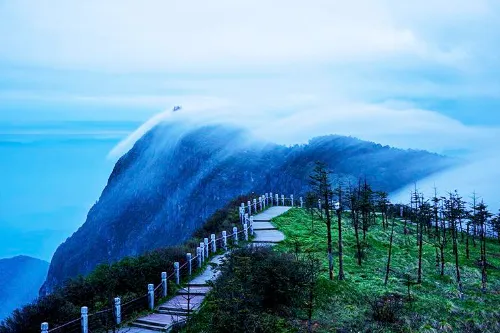
Jiulao Cave
Jiulao Cave is a famous karst cave on Mount Emei. Its over 1,500-meter-long downward-extending passage forms a fully enclosed viewing space, presenting a diverse beauty of space. It is like a simple yet novel, elegant yet solemn art palace, bringing unexpected surprises to visitors.
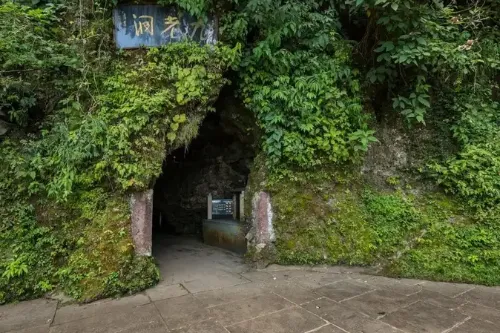
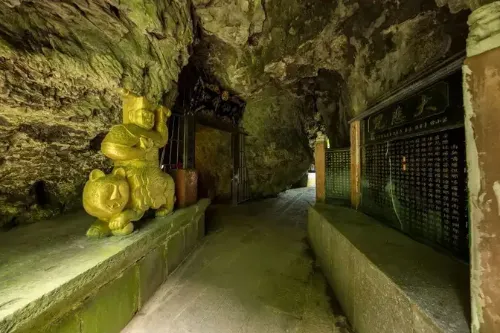
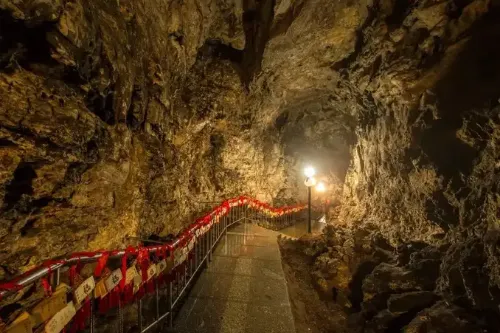
Qingyin Pavilion
Located at the foot of Niuxin Ridge, at an altitude of 710 meters, Qingyin Pavilion is a key stop on Mount Emei's hiking route. In front of the pavilion stands the Shuangfei Bridge, under which the black and white rivers converge to form Niuxin Pond, known as "the most beautiful scenery of Mount Emei." The pavilion enshrines statues of Sakyamuni, Manjushri, and Samantabhadra. Surrounded by lush forests, it is a frequent haunt of monkey groups.
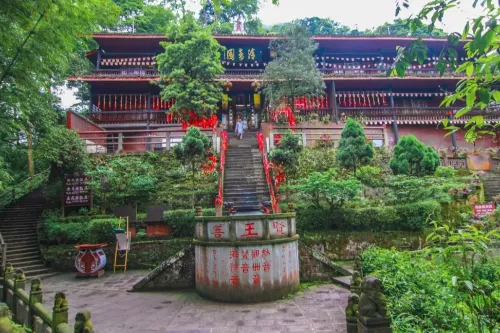
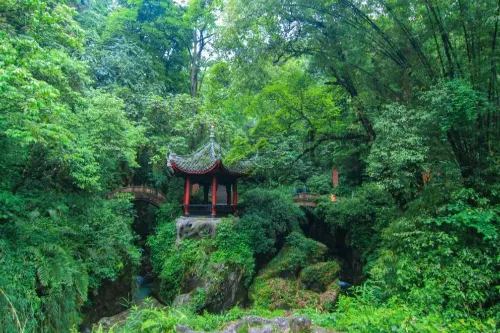
Baoguo Temple
Situated at an altitude of 551 meters, Baoguo Temple is the first temple on Mount Emei, the location of the Mount Emei Buddhist Association, and the center of Buddhist activities on Mount Emei.
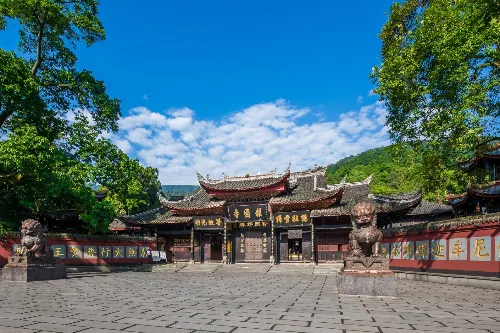
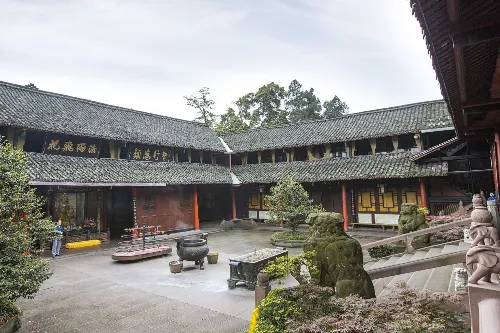
Ecological Monkey Area
Located between Qingyin Pavilion, Yixiantian (One-Line-Sky), and Hongchunping on Mount Emei, this is a narrow and long valley covering an area of 25 hectares. It is currently China's largest natural ecological monkey reserve. There are three family-style wild monkey groups in the area, totaling more than 300 monkeys.

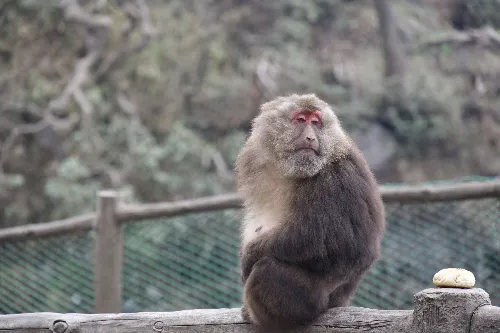
Xixiang Pool
As one of the eight major temples on Mount Emei, Xixiang Pool is located on Zuantian Slope at an altitude of 2,070 meters. According to legend, when Bodhisattva Samantabhadra passed by riding an elephant, the white elephant bathed in the pool—hence the name "Xixiang Pool" (Elephant-Bathing Pool), also known as Tianhua Chan Courtyard.
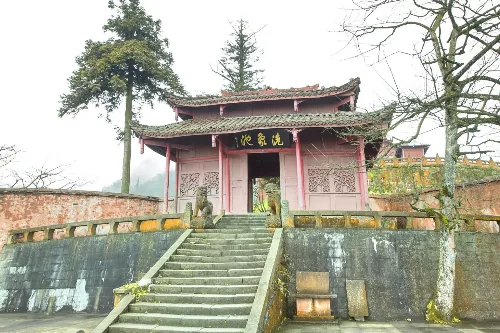
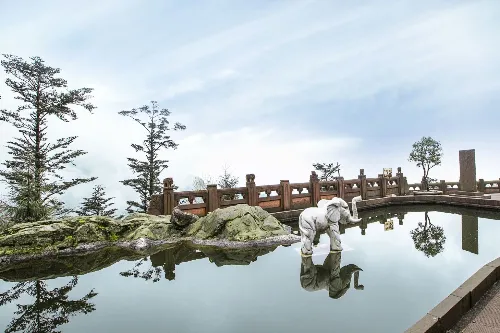
Xianfeng Temple
As one of the eight major temples on Mount Emei, Xianfeng Temple is located at the foot of Xianfeng Rock. Originally named Ciyan Temple, it sits at an altitude of 1,725 meters.
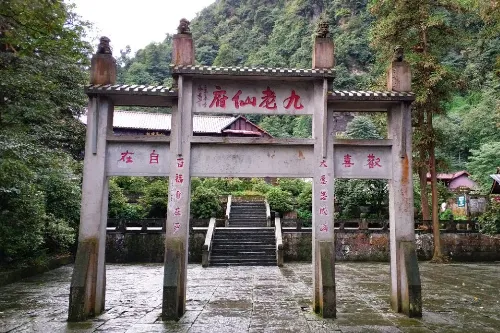
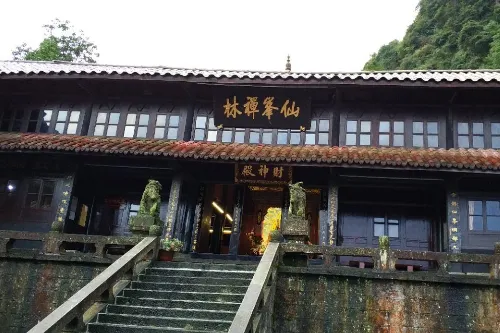
Recommended Tour Routes
One-Day Tour Route: Baoguo Temple (1 hour) → Wuxian Hill (take a sightseeing bus) → Qingyin Pavilion (1.5 hours) → Wannian Temple (1 hour, take a cable car) → Ecological Monkey Area (1 hour) → Leidongping (take a sightseeing bus) → Golden Summit (2 hours, take a cable car) → Return. This route covers core scenic spots and requires taking a sightseeing bus (90 yuan for the full-mountain section) and cable cars, making it suitable for tourists with limited time.
Two-Day Tour Route: D1: Baoguo Temple → Fuhu Temple → Leiyin Temple → Chunyang Hall → Shenshui Pavilion → Zhongfeng Temple → Guangfu Temple → Qingyin Pavilion (about 5 hours of hiking), stay overnight at Qingyin Pavilion; D2: Qingyin Pavilion → Wannian Temple → Xixin Suo → Zhanglao Ping → Chudian → Huayan Ding → Jiuling Gang → Xixiang Pool → Leidongping → Jieyin Hall → Golden Summit (about 8 hours of hiking), stay overnight at the Golden Summit to watch the sunrise.
Travel Tips
- Best Time to Watch the Sunrise at the Golden Summit: 6:00-6:30 in summer and 7:00-7:30 in winter. It is recommended to arrive 1 hour in advance and bring a down jacket (the temperature at the summit is 15℃ lower than at the foot of the mountain).
- Wear non-slip shoes for hiking. The stone steps from Wannian Temple to Jiuling Gang are steep, so it is advisable to bring a hiking pole (sold for 10-20 yuan in the scenic area).
- When visiting the Ecological Monkey Area, keep your backpack zipped up, do not carry plastic bags, do not run when encountering monkey groups, and you can hold a bamboo pole (rented for 5 yuan per pole in the scenic area) for self-defense.
- The vegetarian meals at temples in the scenic area are affordable: 25 yuan per person at Wannian Temple and 35 yuan per person at the Golden Summit. Dining is only available between 11:30 and 13:00.
- In winter (December-February), the road section from Leidongping to the Golden Summit is covered with ice and snow. You need to buy crampons (10 yuan per pair), and it is recommended to take the cable car to avoid slipping.
Important Notes
- Smoking is prohibited in the entire scenic area, and violators will be fined 50-200 yuan. Hats must be removed when entering temple areas such as Baoguo Temple and Wannian Temple.
- Wild monkey groups are aggressive. Do not feed them with your own food or touch the monkeys. If monkeys try to snatch food, let go of the food to protect yourself.
- There are no supply points along the hiking route from Xianfeng Temple to Xixiang Pool. Prepare drinking water and dry food in advance (compressed biscuits and chocolate are recommended).
- Ultraviolet radiation at the Golden Summit is strong. In summer, apply sunscreen with SPF50+ and wear sunglasses; in winter, the road surface is icy, so it is recommended to wear waterproof hiking shoes.
- Last Departure Time of Scenic Area Sightseeing Buses: 18:30 from Leidongping to Baoguo Temple in the peak season and 17:30 in the off-season. Arrange your downhill time reasonably to avoid hiking at night.
Transportation
- High-Speed Rail: Take a high-speed rail from Chengdu East Railway Station/Chengdu South Railway Station to Mount Emei Railway Station. There are more than 30 trains daily, with a travel time of 1.5 hours and a ticket price of 54 yuan. Mount Emei Railway Station is about 1.5 kilometers from the scenic area entrance (Baoguo Temple), and you can walk there or take a taxi (5 yuan).
- Bus: Chengdu Xinnanmen Bus Station and Chengdu Chadianzi Bus Station have daily direct buses to Mount Emei Tourist Transportation Center, with a travel time of 2.5 hours and a ticket price of 90 yuan; Buses from Leshan Xiaoba Bus Station to Mount Emei Scenic Area run every 30 minutes, with a travel time of 40 minutes and a ticket price of 11 yuan.
- Scenic Area Sightseeing Bus: 90 yuan for the full-mountain section (Baoguo Temple-Leidongping) and 40 yuan for the mid-mountain section (Baoguo Temple-Wannian Temple). The ticket can be used for multiple rides.
- Self-Driving: Chengdu → Chengdu-Chongqing Expressway → Chengdu-Leshan Expressway → Mount Emei Exit. The total travel time is about 2 hours. The scenic area parking lot charges 20 yuan per day. It is recommended to arrive before 9:00 a.m. during the peak season (weekends and holidays).
Opening Hours
Mount Emei Scenic Area is open year-round. The entry time is 6:00-18:30, and it closes early at 17:30 in the off-season (December-January). - Operation hours of the Golden Summit Cable Car: 5:30-18:00 (peak season), 6:00-17:30 (off-season); - Operation hours of the Wannian Temple Cable Car: 6:40-18:00 (peak season), 7:00-17:30 (off-season); - Opening hours of Leshan Giant Buddha: 7:30-18:30 (peak season), 8:00-17:30 (off-season).
Ticket Information
- Peak season (January 16-December 14): 160 yuan per person; - Off-season (December 15-January 15 of the following year): 110 yuan per person.
You can search for the official scenic area WeChat public account "峨眉山景区" to get the latest updates or buy tickets online.
Online Booking
Click here to jump to the Trip.com ticketing platform for ticket purchase.


